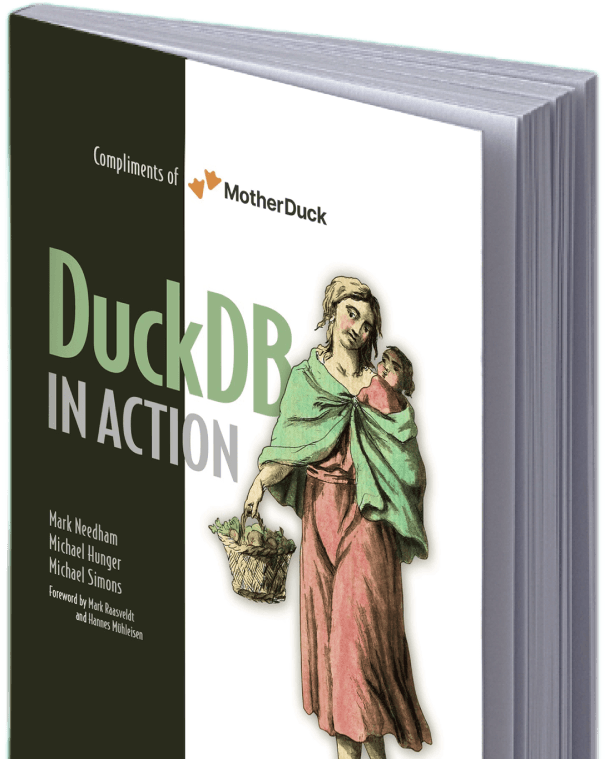2 min read
Executing SQL Queries
This is a summary of a book chapter from DuckDB in Action, published by Manning. Download the complete book for free to read the complete chapter.

3.1 A Quick SQL Recap
SQL queries in DuckDB are constructed from statements and clauses, terminated with semicolons. DuckDB handles whitespace flexibly, allowing for both compact and formatted queries. Case-insensitivity simplifies keyword and identifier usage. DuckDB's SQL dialect incorporates clauses like WHERE, GROUP BY, and ORDER BY to refine query results. WHERE filters rows based on conditions, GROUP BY aggregates values into buckets defined by keys, and ORDER BY dictates the result sequence. These fundamental concepts are illustrated using a real-world example of analyzing energy production data.
3.2 Analyzing Energy Production
This chapter utilizes a real-world dataset of photovoltaic energy production from the US Department of Energy's Photovoltaic Data Acquisition (PVDAQ) project. The dataset, chosen for its accessibility and complexity, mirrors real-world analytical challenges, including data inconsistencies. The analysis focuses on practical applications like planning electricity usage and forecasting amortization, demonstrating DuckDB's capabilities for generating insightful reports from this data.
3.3 Data Definition Language (DDL) Queries
DuckDB, as a relational database management system (RDBMS), uses Data Definition Language (DDL) queries to define and manage the database schema. This involves using CREATE TABLE to define new tables with specified columns and data types, ALTER TABLE to modify existing table structures, and DROP TABLE to remove tables. Understanding these DDL commands is crucial for organizing and maintaining the database structure effectively.
3.4 Data Manipulation Language (DML) Queries
DML queries in DuckDB encompass actions that manipulate data within the database, including INSERT, DELETE, and SELECT.
INSERT statement
The INSERT statement adds new data to a table.
DELETE statement
The DELETE statement removes existing data from a table based on conditions.
SELECT statement
The SELECT statement retrieves specific data specified which matches criteria in a WHERE statement and aggregates data according to a GROUP BY statement.
These DML queries are fundamental for interacting with the data stored within the defined database schema.
3.5 DuckDB-Specific SQL Extensions
DuckDB enhances SQL's usability with extensions that streamline common tasks. SELECT * EXCLUDE() refines queries by specifying columns to omit, while SELECT * REPLACE() modifies column output without altering the original query structure. DuckDB also simplifies column selection and filtering using regular expressions within the COLUMNS expression, enhancing query flexibility and readability.


